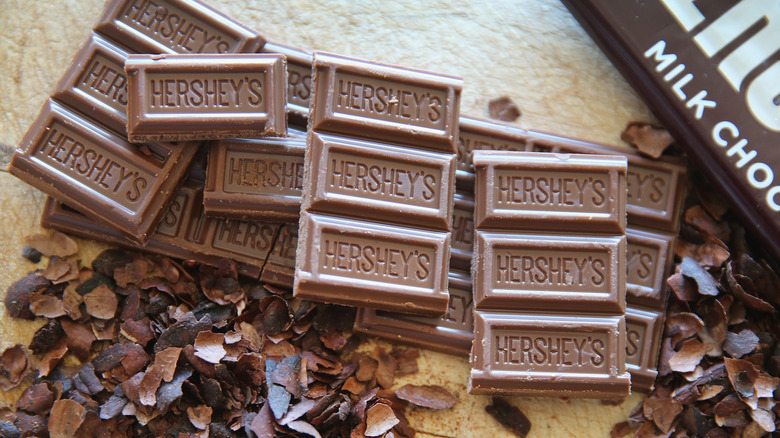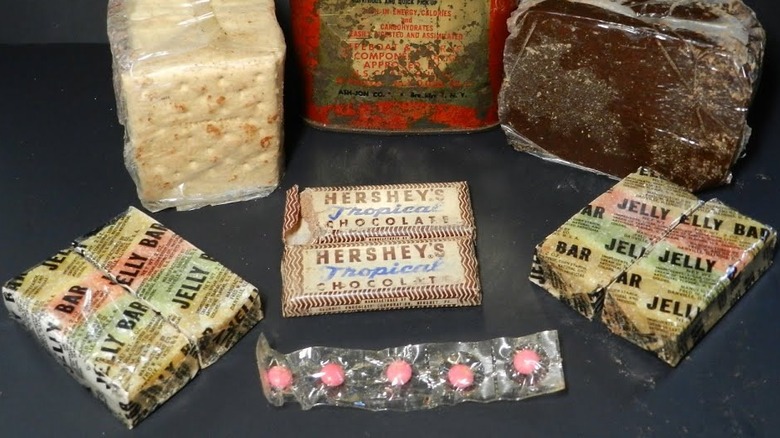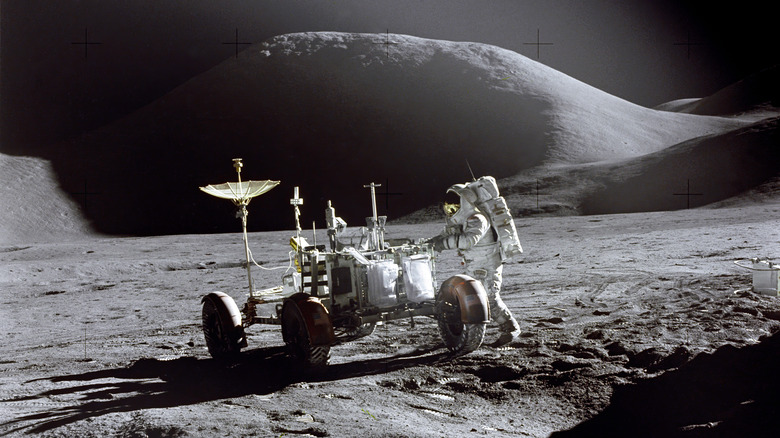The Time Hershey's Chocolate Went To The Moon
During the space race, while other food companies like Baskin-Robbins celebrated lunar landings back on Earth, Hershey's actually got in on the fun and went out of this world. It's unlikely that Milton Hershey, founder of the company — per Encyclopedia Britannica – had imagined such a thing when he first started his business in 1894.
Nevertheless, Hershey's had a meteoric rise. By the turn of the previous century, the candy brand was selling its now iconic milk chocolate bar, and just seven years later, in 1907, little Hershey's Kisses were reaching people's lips, as well. Around this same time, the Hershey factory opened, going on to become the biggest chocolate-manufacturing plant across the globe, also spawning its very own community around itself.
In the new millennium, Hershey's has become an icon in its field. It owns several other candy brands, like Jolly Ranchers, Milk Duds, Reese's, Twizzlers, and Whoppers. There are even Hershey's museums memorializing the venture's legacy. Multiple billions of dollars in sales are now generated by Hershey's every year. Between those humble beginnings and its contemporary domination of the sweet treat industry, Hershey's also made an astronomical amount of history.
Hershey's created heat-resistant chocolate
Hershey's, an American company, has served its country in more ways than one during its existence. For instance, according to The Walrus, back in 1937, a U.S. army captain requested the business make a chocolate bar that wouldn't easily melt and also tasted only a tad better than a boiled potato. Hershey's succeeded, creating a bitter, gritty, and pasty treat that wouldn't melt in the pockets of soldiers. In fact, it didn't even melt after an hour in 120-degree heat, per PennLive. That fact, and its high caloric count, made it a great emergency ration. Plus, the mediocre taste meant soldiers wouldn't eat the backup food unless necessary (via Encyclopedia Britannica). This all came in handy during WWII, especially for those stationed in warmer parts of the world. Thousands upon thousands of bars were produced, and they came to be known as the Tropical Chocolate Bar. Not even rival "melt in your mouth, not in your hand" M&M's could keep Hershey's down.
Heat-resistant chocolate is also useful outside of conflicts. As recently as the 2010s, Hershey's was exploring ways to commercialize the product for sale in fast-growing chocolate market regions such as Africa, India, the Middle East, and South America. For Hershey's, the key to improving heat-resistant chocolate apparently came in the form of a chocolate dough that used milled ingredients to form a stickier foodstuff structure.
Apollo 15 took Hershey's into space
Science is incredibly useful for culinary advances like Hershey's recent heat-resistant chocolate dough. In return, sweet treats can prove to be just as beneficial to science. That's why, per Hershey's, the Tropical Chocolate Bar was sent with astronauts on NASA's Apollo 15 mission to the moon.
What else would one eat in space, anyway? According to the National Air and Space Museum, the first American to dine in microgravity ate pureed applesauce, beef, and veggies in tubes alongside sugar tablets and water. Throughout the 1960s, astronaut food continued to be mostly flavorless mush consumed by straw. Eventually, dehydrated and freeze-dried food coated with gelatin or oil was introduced. Then came scoopable pouches of cold meals.
The Apollo program stepped things up a notch. For instance, the Apollo 11 team ate Stouffer's meals during a lunar quarantine. At one point, ports were installed in astronauts' helmets to allow them easy access to snacks on the go. The Apollo 15 crew also had apricot bars stored in their helmets for moonwalks. Additionally, NASA gave its Apollo 15 astronauts a list of 100 approved foods they could choose from when planning out their own space meals before blasting off (via Ibiblio). Some of the items included were beef steaks, burgers, and citrus drinks. For dessert: a Tropical Hershey's Chocolate Bar that was guaranteed not to be melted from the heat of the rocket!


